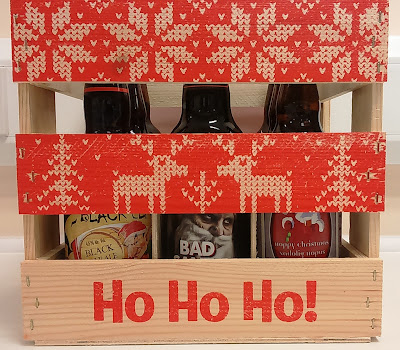The story which broke on Tuesday morning about the
acquisition by Fuller’s of Dark Star Brewery, is old news by now. It will be even older by the time I post this
article; such are the joys of combining a busy career with that of writing
about beer in my spare time.
Every man, woman and their dog have already written about
this takeover, which is the latest in a long line of acquisitions, which has
seen brewers such as Camden Town, London Fields, Meantime and Sharp’s
being snapped up by global conglomerates. Substantial sums of money have been
involved in this process, with the new owners often paying way over the odds
for their purchases. For example,
SAB Miller paid £120 million for Meantime whilst AB InBev splashed out £80
million for Camden.
To a large extent these acquisitions have been
driven by declining sales of global lager brands and old-fashioned keg ales,
but this takeover is subtly different. Fuller’s is not a global brewer and its
beer sales are not in decline, but this doesn’t stop me expressing my
thoughts and sentiments, and about the sale.
Under the deal
Fuller’s will take a 100% stake in Dark Star,
which will give the latter access to the funds it says it needs to
invest in new markets. It will also allow Dark Star to increase sales of its
core brands; beers such as Hophead, APA, Dark Star Original and Revelation.
Brewing will continue at Dark Star’s Partridge Green site, and Managing
Director, James Cuthbertson will remain in charge. Basically, Dark Star will
continue to operate as a stand alone business.
Although Camden,
London Fields and to a lesser extent Meantime, could be described as
“craft-brewers”, Dark Star never quite fitted that particular mold. Unlike the
new wave of brewers, who looked across the Atlantic for
their inspiration, Dark Star drew theirs from the rich brewing heritage of Britain
and Europe. Being able to trace their roots back to the
first wave of micro-brewers, inspired by CAMRA and the so-called “real ale
revolution”, gave Dark Star a kudos with real ale drinkers, which most of the
new entrants into the industry just didn’t possess.
So as a cask
ale lover, Fuller’s buying Dark Star has struck quite a chord with me, so
despite slight reservations, I fully understand the reasoning put forward by
both companies, for the purchase, I think Fuller’s will on the whole, be good
custodians of Dark Star and its beers. Simon Dodd, Managing
Director of The Fuller’s Beer Company, certainly thinks so.
“Both Fuller’s and Dark Star are brewers with
quality and taste at their heart. I just can’t wait to see how Dark Star
innovates further with the support of Fuller’s and access to our expertise in
brewing, retailing and business elements such as finance, purchasing and IT
systems.”
To balance the picture James Cuthbertson
said: “Since our inception in 1994, we have continuously grown from those early
days in The Evening Star Pub in Brighton to the current brewery in Partridge
Green. The partnership with Fuller’s, another independent brewery with
fantastic heritage and great beer at its very core, will allow us to take the
brewery to the next level”.
“The deal means
we will continue to do what we do, but gives us huge opportunities to brew more
one-off small batch beers hand-in-hand with exploring the export market and
expanded bottle and can formats.”
Before winding up, it’s worth noting that Dark Star aren’t
the first brewery to have been bought by Fuller’s in recent times. In 2005 the
Chiswick brewer acquired George Gale & Co of Horndean, Hampshire and closed the site a
year later. Gales were on the market following the decision of one of the major
family shareholders to cash in his chips, so the rest of the family saw
Fuller’s as representing the best chance for the future of the Gales name and
the Gales beers.
Although Fuller’s continued brewing several of the Gales
brands, the Horndean Brewery was badly run down and in need of substantial investment to bring it into the
21st Century. So whilst the closure decision was not taken lightly,
the condition of the brewery itself, and the investment required, made it
inevitable.
Dark Star is different; their brewery at Partridge Green is
less than 10 years old, and there is still room for expansion at the site. Dark
Star had been looking to grow their business further and Fuller’s seemed the
natural choice. The latter had dabbled in a “craft” range, with only limited
success, so between the two of them, they should come up with something which
will help both companies expand and prosper.
Personally, I have a real soft spot for Dark Star, having
watched them prosper and grow over the years, turning out some fantastic beers
in the process. I have visited their Partridge Green brewery on two occasions;
the latest one being last summer. So as for what happens now, we will have to
wait and see, but for the time being at least, I remain optimistic.





































